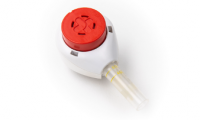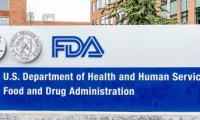-
Johnson & Johnson Set to Acquire Shockwave Medical, Aiming to Strengthen Company’s MedTech Division
- Source: drugdu
- 84
- April 8, 2024
-
Innovative Blood Collection Device Overcomes Common Obstacles Related to Phlebotomy
- Source: drugdu
- 90
- April 2, 2024
-
J&J reportedly eyeing Shockwave Medical for takeover
- Source: drugdu
- 112
- April 2, 2024
-
MHRA warns of unsafe counterfeit anti-choking devices
- Source: drugdu
- 88
- March 27, 2024
-
Coin-Sized Device Rapidly Isolates Blood Plasma for Quicker and More Precise Clinical Diagnoses
- Source: drugdu
- 147
- March 26, 2024
-
POC Biomedical Test Spins Water Droplet Using Sound Waves for Cancer Detection
- Source: drugdu
- 149
- March 16, 2024
-
FDA Seeks $7.2 Billion to Enhance Food Safety and Nutrition, Advance Medical Product Safety, and Strengthen Public Health
- Source: drugdu
- 121
- March 15, 2024
-
Pain-Free, Low-Cost, Sensitive, Radiation-Free Device Detects Breast Cancer in Urine
- Source: drugdu
- 145
- February 22, 2024
-
Smiths Medical recalls syringe pumps for software malfunction
- Source: drugdu
- 134
- February 17, 2024
-
Smiths Medical recalls syringe pumps for software malfunction
- Source: drugdu
- 189
- February 17, 2024
your submission has already been received.
OK
Subscribe
Please enter a valid Email address!
Submit
The most relevant industry news & insight will be sent to you every two weeks.













